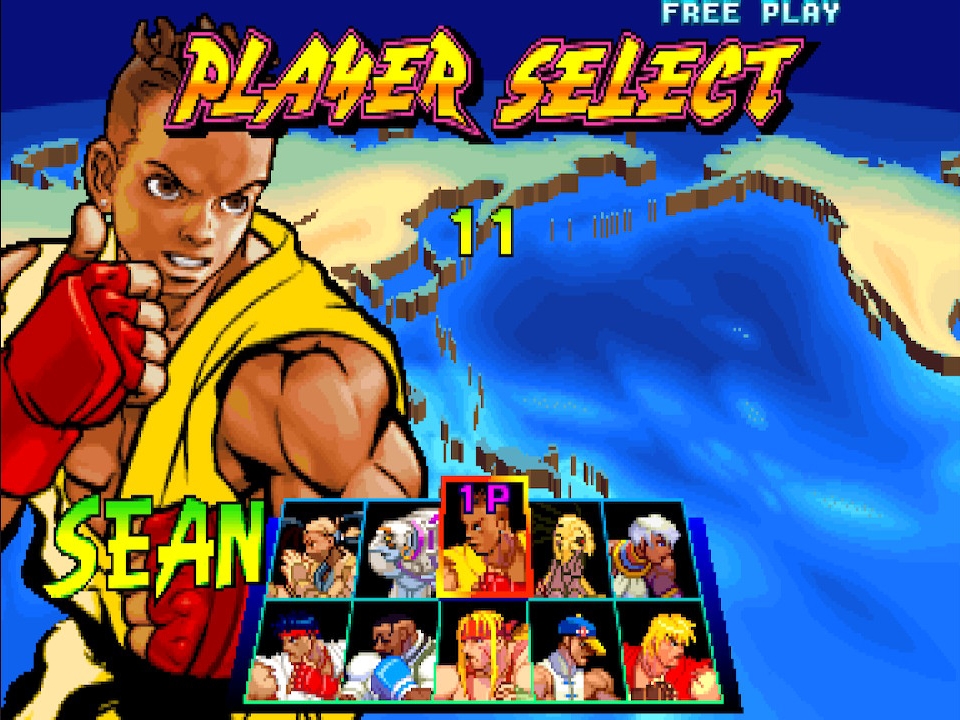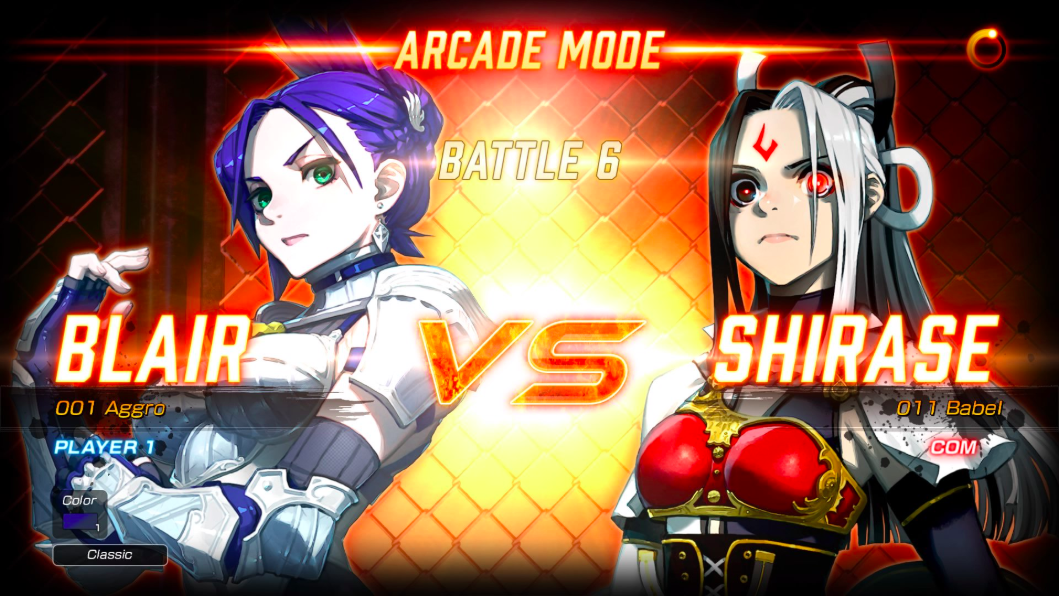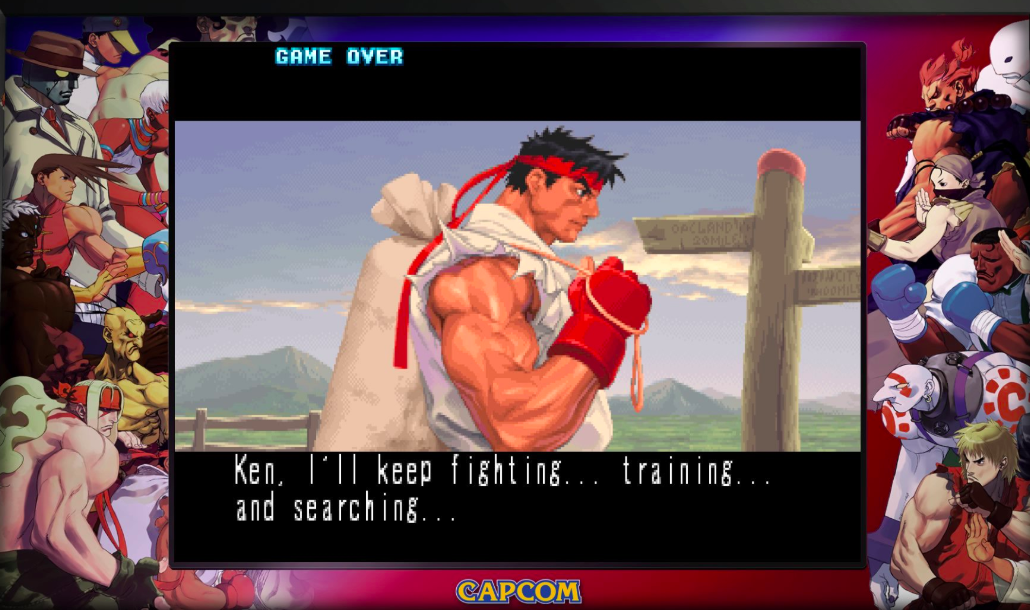The Importance of Story & Character in Fighting Games
Without a doubt, 2018 will be remembered as a banner year for fighting games. Starting with the release of Dragon Ball FighterZ, then Street Fighter 30th Anniversary Collection and Fighting EX Layer, and soon Soul Calibur VI, with Super Smash Bros Ultimate to cap it off—it's an awesome time to be into fighters. And this got me thinking...
Why do we play fighting games? What is it about one fighting game that makes it more appealing than another?
Many in the Fighting Game Community (FGC, as it’s often abbreviated) will probably say that good game mechanics are the primary draw. And while I certainly agree that's an essential element of any video game—especially for a game’s long term viability—I don’t think that mechanics are the primary factor in attracting new players. In fact, I can't think of any time when the mechanics of fighting game was the initial hook that got me interesting in playing. (Except maybe Battle Arena Toshinden, and I didn’t feel compelled to play that game more than once.)
For me, it’s definitely the characters.
I get drawn into a game primarily by interesting characters—along with the settings, premise, and story that contain them. Especially when a game’s artistic style complements the overall narrative, it’s irresistible. And for fighting games in particular, character designs need to be incredibly solid, otherwise I won’t be at all interested in trying it out.
As a side-effect of the value I place on fighting game characters, I’ve developed a genuine interest in fighting game stories, what’s nowadays referred to as game “lore”. (Though I tend to think that word is both ill-fitting and way overused.) I actually care about the character backgrounds, ongoing sagas, the overall premise of a fighting game. I find some narrative setup—thin as it may be—necessary for connecting with, and truly enjoying, a fighting game experience. Obviously most players don’t generally come to fighting games for the story, but I genuinely like having it there, especially when it’s done well.
Just a simple arcade mode goes a long way.
Now to be clear, I am not necessarily saying that I want more complex stories and more storytelling in fighting games. Hardly! In fact, the opposite is probably more accurate. The thing about stories in fighting games is that, generally speaking, less is more. The old adage of “show don’t tell” in video games usually morphs into “do don’t show”. For this genre I suppose it’s “Don’t show or tell, just FIGHT”. It is entirely possible to tell too much.
Call me crazy, but I tend to think the brevity and efficiency of storytelling in the Street Fighter II wave of fighting games was quite impressive from a narrative point of view. It’s certainly been said that SF didn’t need a story at all. “Super-powered martial arts masters from around the globe duke it out to see who is the best,” one might say. “This stuff writes itself!” But the strength of SF’s lore was mostly established through brilliantly crafted character designs. The SF team created a diverse cast of archetypal characters that did most of the narrative heavy lifting on their own. An iconic crew that communicated like 90% of what you needed to know just by how they looked, how they moved, and the style in which they fought. Good characters, it would seem, are the key to success.
When you first learn that Ryu and Ken trained together under the same master, and that’s why they share the same fighting style, it’s kind of neat. When you discover that the scar on Sagat’s chest came from Ryu’s dragon punch in the first SF tournament—and that defeat inspired Sagat to develop his own “Tiger Uppercut”—that’s genuinely cool. Then when you know that Guile is trying to avenge the death of his friend Charlie in SF2, and then Charlie appears as a playable character in the SF Alpha games (which serve as a prequel to SF2), that’s just plain sick.
As I alluded to previously, the thing about fighting game story is that so much of it is baked into the designs of the characters themselves. The story of each fighting game is built around its character and its narrative lives or dies by how compelling the characters are. For instance, if M.Bison had been a really dull, uninteresting character with zero charm and minimal menace, then no amount of world building would make you care whose father he killed on that fateful Tuesday. (If you don't believe me, just compare him to Seth from SFIV. Or even worse, SFV’s Fang…yeesh!)
A cool visual style can serve as a game’s initial hook, but character design will always be the beating heart of a fighting game.
Thus good fighting game stories can be super thin. Hell, the best story might be little more than an initial premise! Something that explains just enough for you understand what’s happening and stops there. Perhaps this principle applies to many other types of video game narratives—maybe even to other media in general—but I think it’s unquestionably true of fighting games.
Minute details should not need to be spelled out in any martial arts fiction because A) complicated narratives are not the focus of such of stories (action is). And B) gaps in information can be filled in by the player using their own imagination. By preserving a bit of mystery, or leaving some potential connections ambiguous, the best fighting game narratives leave room for lore to grow, some space for the story to sit a little bit differently with each person who experiences it. I’d assume it also must be much easier than overwriting a story that many hardcore players won’t even bother to check out once anyway.
Mishima Parenting 101: Throw your son off a cliff.
But even if strong character design is essential to fighting games for drawing in new players, does the resulting story that gets built around those characters really matter in the slightest? Honestly, it’s entirely possible that the answer to this question is “no”. However, I suspect that a game’s story—even a fighting game’s story—is actually more important to the overall experience than you might think. At the end of the day, it’s a matter of consistency.
Consistency is how video games create a sense of immersion. Artistic consistency in the sound and visuals, input/mechanical consistency in the gameplay, thematic consistency in story and presentation: every part of the experience either adds to, or detracts from, the immersive quality of game. A solid premise, with a fitting story and consistent themes adds to the overall experience of a video game. This is just as true of fighting games as it is with adventure games, role-playing games, strategy games—just about any game genre with a narrative.
For an example of consistency triumphing over mechanics, just look at Samurai Shodown. I would definitely include Samurai Shodown in that SF2 wave of fighting games with incredibly efficient storytelling. It was an instant classic. Though I wouldn't say the original SamSho (as the kids call it) featured especially sharp or innovative game mechanics. I always thought the controls were a little loose and certain special moves were unnecessarily hard to pull off. Gameplay-wise, SamSho wasn't as refined as SF2, but it didn't need to be.
What set Samurai Shodown apart was its wildly immersive atmosphere. A diverse cast of pseudo-historical characters drawn from Japan's Edo period (with some overt references to the legendary tales of Miyamoto Musashi) made for the backbone of the game's premise. Combine that with colorful visuals reminiscent of woodblock print/painting style of the era and an equally appropriate soundtrack using Japanese folk instruments, and you have a game that succeeds in winning the player over before the first match ends. The original SamSho stuck the landing so perfectly that future games in the series would be more or less well-received depending on how effectively they preserved that consistency.
As long as a fighting game’s characters—in combination with the settings, premise, and story that contain them—are tonally/thematically consistent, the overall experience should be strong and the game should feel good to play.
The opposite, though, is also true. When a fighting game’s characters are tonally or thematically inconsistent (with the other characters, the setting, story, etc.), it weakens the experience. A character who’s especially out of place might break the consistency altogether, reminding the player that this is just an arbitrary game. The stronger the tonal dissonance, the farther pulled out of the experience the player will be.
I believe that the characters included in a fighting game (along with how much information is provided/revealed about them) is the strongest factor in how well a game draws in new players, and how long it retains those players over time. I’m sure lots of competitive players out there will disagree, citing mechanics as the most important aspect. But to me, the story actually matters (granted, in a counterintuitive way), and characters matter above all else.










